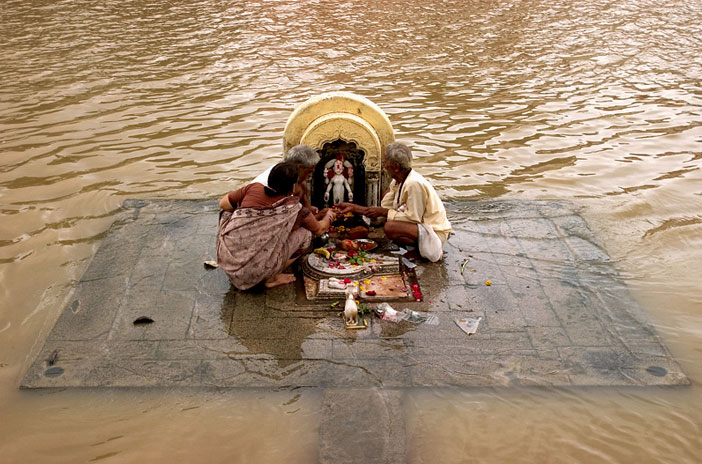 |
Puja
 |
Puja is a form of ritual prayer and of showing reverence to the Gods. Most practicing Hindus perform puja twice a day, and then on all special occasions and holidays. Puja can be performed individually or collectively, in silence or voiced prayer or chant. And a typical puja has 27 steps.
 |
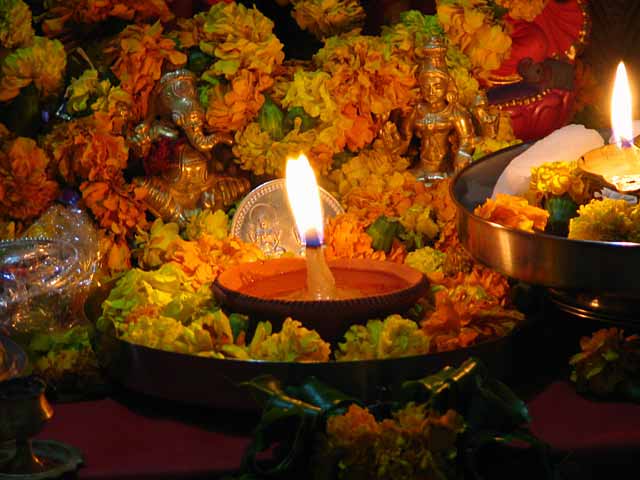 |
Puja can consist of meditation (dhyana), austerity (tapa), chanting, often with japa beads (mantra), scripture reading (svadhyaya), offering food (thaal) and/or prostrations (panchanga or ashtanga pranama, dandavat).
And Puja is usually concluded with a light offering, a aarti to the Lord. An aarti is a ritual in which light from wicks soaked in ghee (purified butter) or camphor is offered to one or more Gods. In the image above (right), an aarti is offered to Ganesha and Lakshmi, both heavily laden with garlands, on the eve of Diwali.
Authentic - in sight and sound
Known as Diwali in the north and Deepavali in south India, and also called the "Festival of Lights," this three-day festival of fireworks and ceremonies focuses on wining the favor of Ganesha and Lakshmi and symbolizes the victory of good over evil. Lamps are lit as a sign of celebration and hope for humankind. It begins the new year in the Hindu calendar.
Diwali - in sight and sound
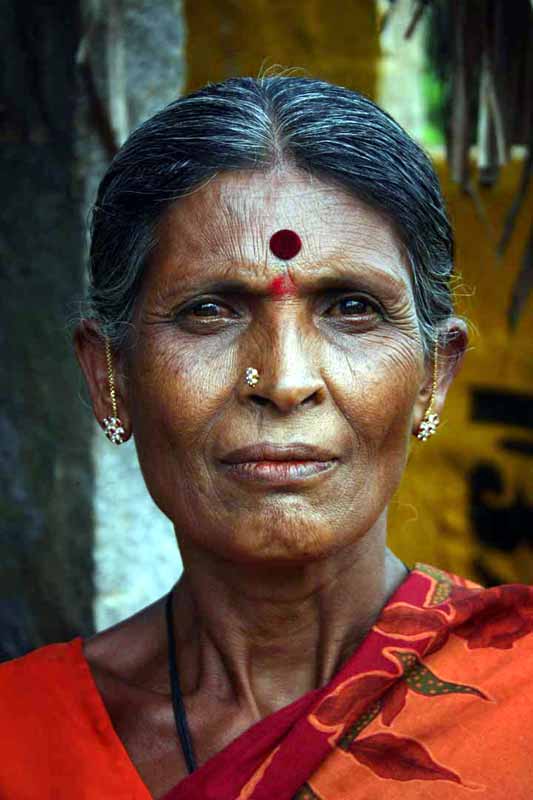 |
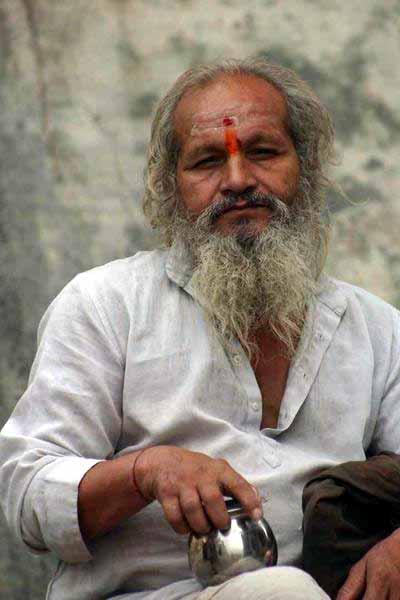 |
Woman with a bindi and man with a tilaka. The individual applies a bindi or tilaka mark on the forehead with sandalwood paste, and then a vermillion (kumkum) dot (chandlo) in its center.
The red bindi is worn by women to also signifying their married status. Red symbolizes love and fertility, and is an auspicious sign.
Both demonstrate one's submission and devotion to the Gods and Goddesses, and are referred to as the location of the "third eye," a chakra. Chakras are energy centers which radiate out from the inner body (see Smith page 36). The "third eye" would come alive when one reaches a high state of mediation.
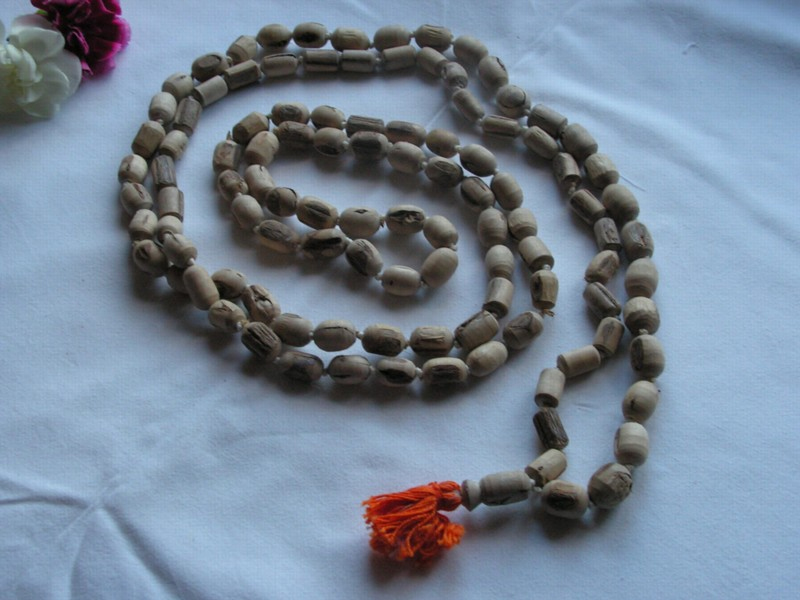 |
Practice of japam, "ringing of changes of love"- of repeating the name of a God or Goddess, a mantra, with Japa beads. Japa beads, consisting of 108 beads plus the head bead. Within Hindu traditions Vaishnava devotees commonly chant on beads made from the Tulsi plant, held as a sacred manifestation of Tulsidevi; whereas Shaivites use Rudraksah beads. It is not uncommon for people to wear japa beads around their neck, although some practitioners prefer to carry them in a bead-bag in order to keep them clean.
The number of beads in the Japa mala is generally 108, which has great significance in both traditions. What is significance of 108?
![]() http://en.wikipedia.org/wiki/Puja
and http://en.wikipedia.org/wiki/japa
http://en.wikipedia.org/wiki/Puja
and http://en.wikipedia.org/wiki/japa